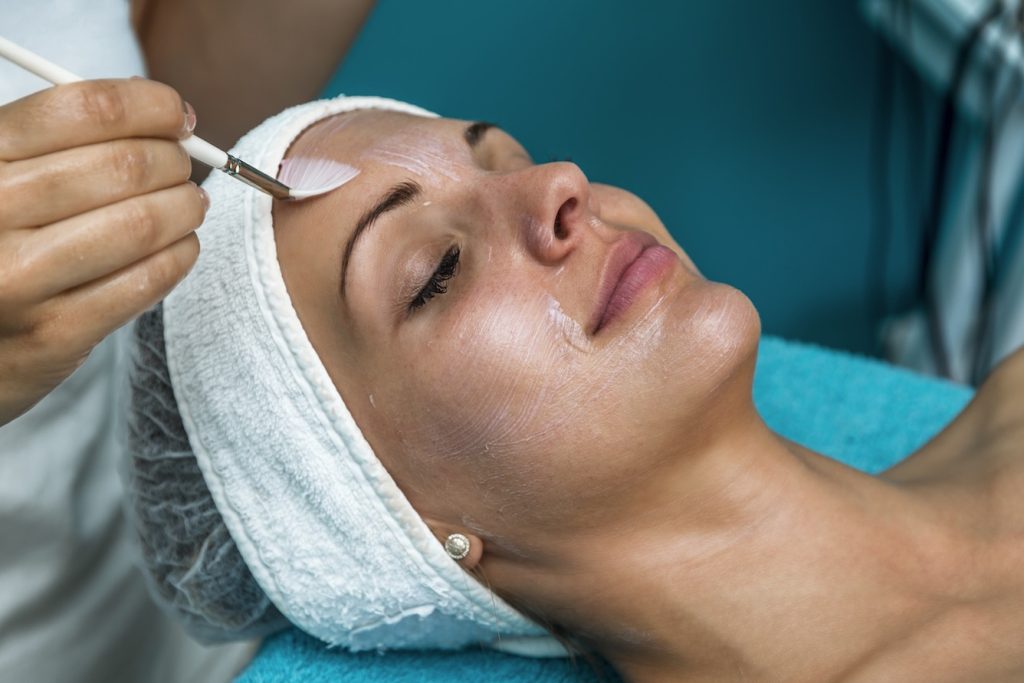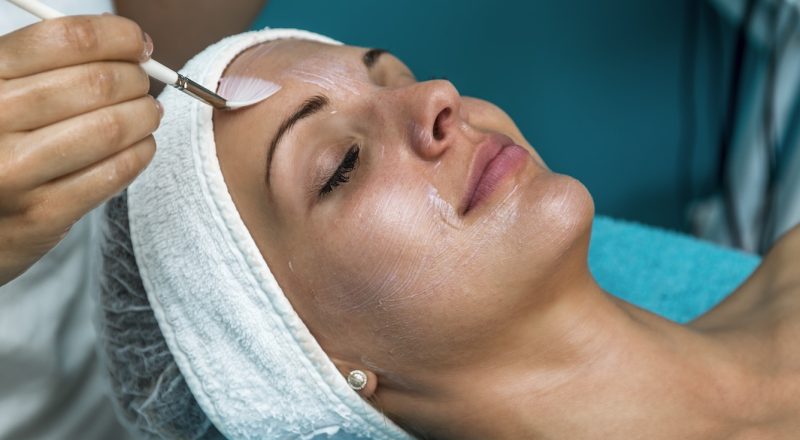Introduction
When it comes to rejuvenating your skin and achieving a youthful glow, chemical peels have become a popular choice. These skincare treatments have been around for quite some time, but they’ve gained immense popularity in recent years due to their effectiveness in addressing a wide range of skin concerns. However, before you schedule your first chemical peel appointment, it’s essential to understand both their benefits and potential side effects. In this blog, we’ll explore what chemical peels are, their benefits, and the possible side effects to help you make an informed decision about whether this treatment is right for you.
What is a Chemical Peel?
A chemical peel is a cosmetic treatment that involves the application of a chemical to the skin’s surface. The chemical solution works by exfoliating the top layers of the skin, which subsequently peels off over time. This process encourages the growth of new, healthier skin cells, resulting in improved skin texture, tone, and overall appearance. Chemical peels are commonly used to address a variety of skin concerns, including:
- Acne and Acne Scars: Chemical peels can help reduce acne and acne scars by exfoliating skin cells that are damaged and promoting the growth of new, smoother skin.
- Hyperpigmentation: They can lighten dark spots, sunspots, and melasma, leading to a more even skin tone.
- Wrinkles and Fine Lines: Chemical peels can stimulate collagen production and reduce the presence of fine lines and wrinkles.
- Sun Damage: They can help repair sun-damaged skin by removing damaged skin layers.
- Uneven Skin Texture: Chemical peels can improve skin texture, making it smoother and more youthful.
- Large Pores: They can minimize the appearance of large pores by removing dead skin cells and debris that can clog them.
Benefits of Chemical Peels

Now that we’ve discussed what chemical peels are and what they can treat, let’s delve into their numerous benefits:
- Improved Skin Texture: One of the most significant advantages of chemical peels is their ability to improve skin texture. By exfoliating or removing the upper dead layer of skin cells, peels can leave your skin feeling smoother and looking more youthful.
- Reduced Hyperpigmentation: Chemical peels can effectively reduce hyperpigmentation issues like sunspots, age spots, and melasma, leading to a more even skin tone.
- Acne and Acne Scars: They can help fight acne and reduce acne scars by unclogging skin pores and stimulating and promoting the growth of new skin.
- Diminished Fine Lines and Wrinkles: Chemical peels stimulate collagen production. It gives your skin a radiant and youthful look by reducing wrinkles and fine lines.
- Boosted Radiance: Chemical peels can revive dull skin, giving you a radiant and glowing complexion.
- Enhanced Product Absorption: After a chemical peel, your skin is better prepared to absorb skincare products, allowing them to work more effectively.
- Customizable: Chemical peels come in various strengths, making them customizable to your specific skin type and concerns.
Potential Side Effects of Chemical Peels
While chemical peels offer numerous benefits, it’s essential to be aware of the potential side effects and risks associated with the procedure. These side effects can vary according to the depth of the peel and your individual skin type. Here are some common side effects to consider:
- Redness and Irritation: After a chemical peel, you can expect some degree of redness and irritation. This is a natural response as your skin heals and regenerates. The intensity and duration of redness vary depending on the peel’s depth.
- Peeling and Flaking: As the name suggests, peeling is a common side effect. Your skin will shed the treated layers, leading to flaking and peeling for a few days to a week following the procedure.
- Sensitivity to the Sun: Your skin will be more sensitive to the sunlight after a chemical peel. It’s crucial to protect your skin with sunscreen and avoid prolonged sun exposure to prevent complications.
- Swelling: Some individuals may experience mild swelling, particularly after deeper peels. This usually subsides within a few days.
- Hyperpigmentation or Hypopigmentation: In rare cases, chemical peels can cause changes in skin pigmentation, either darkening (hyperpigmentation) or lightening (hypopigmentation). This risk is higher with deeper peels and is more common in individuals with darker skin tones.
- Infection and Scarring: While rare, infection and scarring are potential risks, especially if post-peel care instructions are not followed diligently.
- Allergic Reactions: Sometimes people may experience allergic reactions to the chemicals used in the peel. It’s essential to inform your practitioner of any allergies before the procedure.
Choosing the Right Peel for You
To avoid the risk of side effects and achieve the best results, it’s crucial to choose the right type of chemical peel for your skin type and concerns. There are mainly three types of chemical peels:
- Superficial Peels: These are the mildest peels and are often used to brighten the skin and improve texture. They have minimal downtime and are suitable for most skin types.
- Medium Peels: Medium-depth chemical peels penetrate deeper into the skin and are effective for treating moderate skin concerns like acne scars and wrinkles. They typically have a longer recovery period.
- Deep Peels: Deep peels provide the most dramatic results but also have the longest recovery time and the highest risk of side effects. They are usually reserved for severe skin issues.
Before getting a chemical peel, consult with a qualified dermatologist who can assess your skin, discuss your goals, and recommend the most appropriate peel for your needs.
Conclusion
Chemical peels can be an excellent and wise option for achieving smoother, more youthful-looking skin and addressing a variety of skin concerns. However, it’s essential to be well-informed about their benefits and potential side effects before undergoing the procedure. By choosing the right type of peel for your skin and following post-peel care instructions diligently, you can avoid or minimize the risk of adverse effects and enjoy the many benefits of chemical peels. Remember to consult with a licensed skincare professional to determine the best approach for your unique skin needs. With the right guidance, you can embark on your journey to healthier, more radiant skin.
